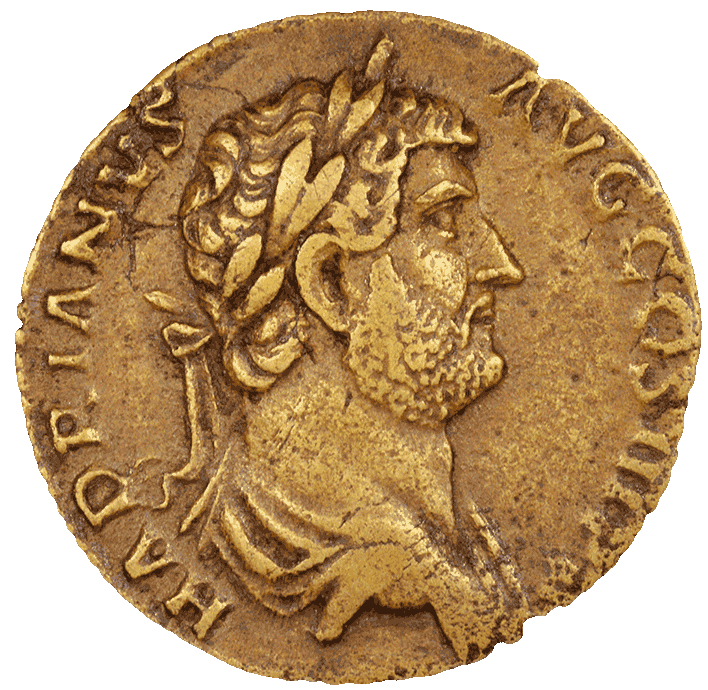About the Famous Romans
When you read about the lives of famous Romans, three things immediately come to mind; 1) that these famous people were overwhelmingly men; 2) that the majority of them were born into privilege, and, 3) that the majority of them were skilled in the arts of public speaking, politics and war. There were, of course, exceptions—Ennius, Plautus, Virgil, Ovid and Nero, who may have not been military men—but these exceptions proved a rule that seems to have lasted from the earlier times of the Roman state through to late antiquity; that there was a certain way to educate a young Roman boy of the upper class in preparation for citizenship and political participation. This mode of education gave Roman institutions a stability rarely seen in states for such a sustained period of time.
For Roman families with the means, young boys were taught to read and write (grammar), to argue (logic), to speak well publicly (rhetoric) and how to accept the discipline of the military barracks and perform on the battlefield. When a boy was old enough, after completing studies with a Grammaticus and a Rhetor, he entered military training (usually on the staff of a general) for approximately a decade, before standing for public office (the cursus honorum). If a young man was sufficiently talented, he could become consul by the age of 42.
For the purposes of this website, we are talking about the period between 500 BC and 235 AD; a very long time. But when you read the biographies of these notable Romans, you will recognize the continuity of classical culture.
Although there were many ways to bind citizens to the Roman state, once you strip away the elements of culture, there remains naked force. For the time period we’re discussing, the Roman legions, for the most part, protected the integrity of the Roman state. Whether it was Cincinnatus (519-430 BC), born during the Regal period but militarily and politically active during the early republic, fighting the Latin tribes; or, Scipio Africanus (236-183 BC), of the middle republic, fighting the Carthaginians; or, the emperor Trajan (53-117 AD), of the middle Principate period, fighting the Dacians and Parthians, all were accomplished in the military arts.
A word about Roman women: by the time of the late Republic and early Principate, aristocratic girls were getting an education as good as the boys. Roman women could not officially hold public office, yet those few who were given the opportunity, exploited the patronage system and practiced soft power very effectively. Cornelia (the mother of the Gracchus brothers), Livia (the wife of Augustus), Messalina (wife of Claudius), Agrippina (mother of Nero), Pompeia Plotina (wife of Trajan) and Julia Mamaea (mother of Alexander Severus), immediately come to mind.
About this Graphic
Hadrianic Brass Sestertius
In the second century AD, during the reign of Hadrian, a brass sestertius was struck, probably in Rome. Brass was considered more valuable than bronze by the Romans, having twice as much value. They called it orichalcum or aurichalcum, meaning gold-copper.
A brass sestertius would typically weight 24-28 grams, about an ounce. It was a large coin, which allowed the mint makers ample space for high quality images.
The brass sestertius was reintroduced by Augustus, valued at 1/100 of an aureus, and continued in use until the latter part of the 3rd century AD.
About the Famous Romans
When you read about the lives of famous Romans, three things immediately come to mind; 1) that these famous people were overwhelmingly men; 2) that the majority of them were born into privilege, and, 3) that the majority of them were skilled in the arts of public speaking, politics and war. There were, of course, exceptions—Ennius, Plautus, Virgil, Ovid and Nero, who may have not been military men—but these exceptions proved a rule that seems to have lasted from the earlier times of the Roman state through to late antiquity; that there was a certain way to educate a young Roman boy of the upper class in preparation for citizenship and political participation. This mode of education gave Roman institutions a stability rarely seen in states for such a sustained period of time.
For Roman families with the means, young boys were taught to read and write (grammar), to argue (logic), to speak well publicly (rhetoric) and how to accept the discipline of the military barracks and perform on the battlefield. When a boy was old enough, after completing studies with a Grammaticus and a Rhetor, he entered military training (usually on the staff of a general) for approximately a decade, before standing for public office (the cursus honorum). If a young man was sufficiently talented, he could become consul by the age of 42.
For the purposes of this website, we are talking about the period between 500 BC and 235 AD; a very long time. But when you read the biographies of these notable Romans, you will recognize the continuity of classical culture.
Although there were many ways to bind citizens to the Roman state, once you strip away the elements of culture, there remains naked force. For the time period we’re discussing, the Roman legions, for the most part, protected the integrity of the Roman state. Whether it was Cincinnatus (519-430 BC), born during the Regal period but militarily and politically active during the early republic, fighting the Latin tribes; or, Scipio Africanus (236-183 BC), of the middle republic, fighting the Carthaginians; or, the emperor Trajan (53-117 AD), of the middle Principate period, fighting the Dacians and Parthians, all were accomplished in the military arts.
A word about Roman women: by the time of the late Republic and early Principate, aristocratic girls were getting an education as good as the boys. Roman women could not officially hold public office, yet those few who were given the opportunity, exploited the patronage system and practiced soft power very effectively. Cornelia (the mother of the Gracchus brothers), Livia (the wife of Augustus), Messalina (wife of Claudius), Agrippina (mother of Nero), Pompeia Plotina (wife of Trajan) and Julia Mamaea (mother of Alexander Severus), immediately come to mind.
About this Graphic
Hadrianic Brass Sestertius
In the second century AD, during the reign of Hadrian, a brass sestertius was struck, probably in Rome. Brass was considered more valuable than bronze by the Romans, having twice as much value. They called it orichalcum or aurichalcum, meaning gold-copper.
A brass sestertius would typically weight 24-28 grams, about an ounce. It was a large coin, which allowed the mint makers ample space for high quality images.
The brass sestertius was reintroduced by Augustus, valued at 1/100 of an aureus, and continued in use until the latter part of the 3rd century AD.


